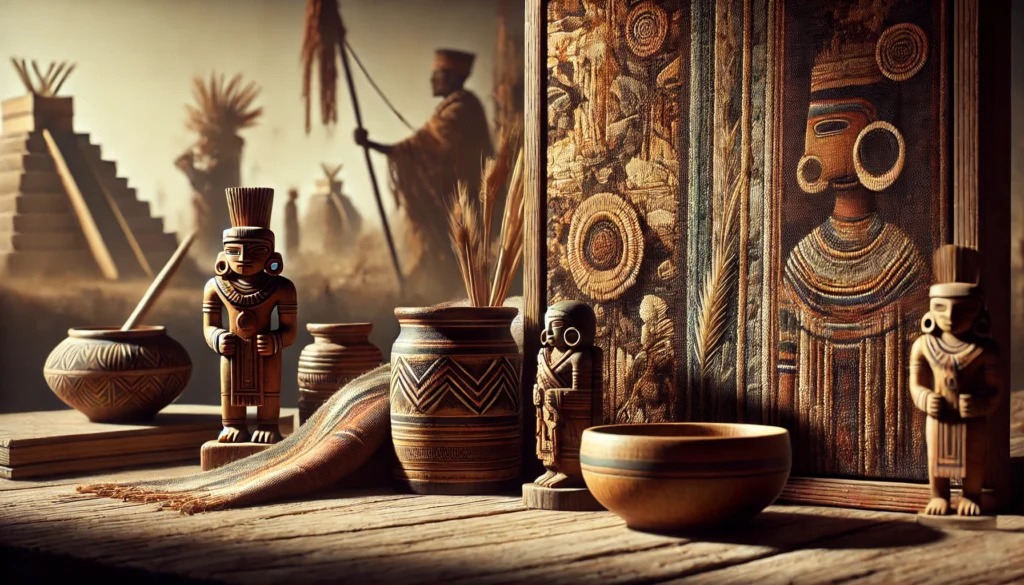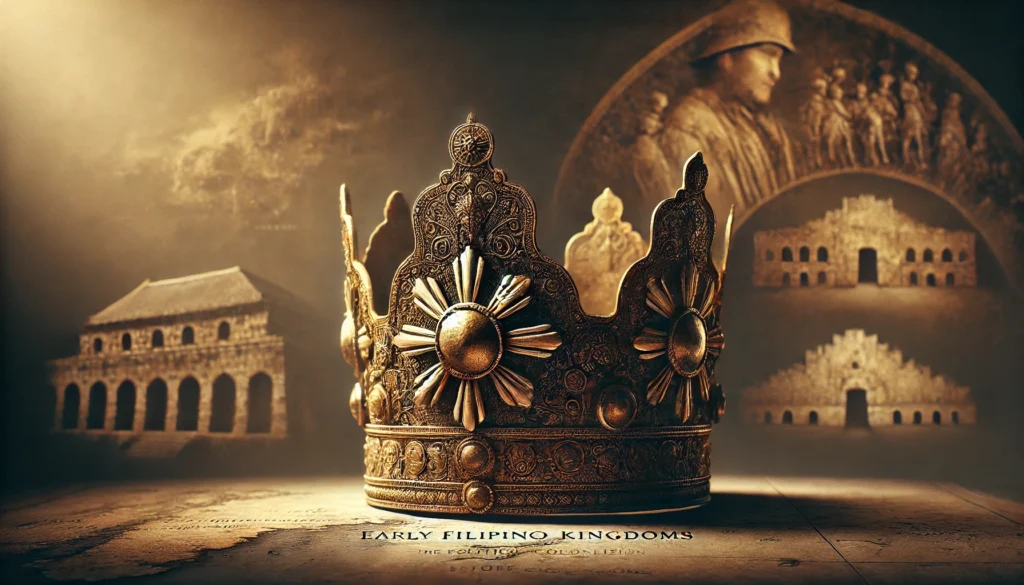The Philippines, an archipelago of over 7,000 islands, boasts a rich and diverse cultural heritage that predates colonial influence. Indigenous art and culture in the Philippines offer a fascinating glimpse into the pre-Hispanic life of the archipelago’s earliest inhabitants. These expressions of creativity and tradition have survived centuries of change, providing invaluable insights into the beliefs, customs, and daily lives of our ancestors.
Origins and Development of Philippine Indigenous Art
Ancient Roots
Philippine indigenous art traces its roots back to the Neolithic period, around 6,000 BCE. Archaeological evidence suggests that early Filipinos were already creating intricate pottery, weaving textiles, and crafting jewelry long before foreign influences reached the islands.
Influences and Evolution
Over time, indigenous art in the Philippines evolved, incorporating influences from various cultures:
- Austronesian migration (4,000-2,500 BCE)
- Indian cultural diffusion (1st millennium CE)
- Chinese trade relations (10th century CE onwards)
These influences blended with local traditions, resulting in a unique artistic expression that varied across different regions of the archipelago.
Major Forms of Indigenous Art
Weaving and Textiles
Textile production has been a cornerstone of Philippine indigenous art for millennia. Different ethnic groups developed their own distinct weaving traditions, patterns, and techniques.
- T’nalak: Sacred cloth of the T’boli people
- Inabel: Handwoven textiles from the Ilocos region
- Piña: Pineapple fiber cloth from Aklan
These textiles often feature intricate designs that tell stories of creation myths, tribal histories, and natural phenomena.
Pottery and Ceramics
Ancient Filipinos were skilled potters, creating both utilitarian and ceremonial vessels. Notable examples include:
- Manunggul Jar: A burial jar from Palawan (890-710 BCE)
- Maitum Anthropomorphic Pottery: Human-shaped funerary urns from Sarangani (5 BCE – 225 CE)
These artifacts provide valuable insights into pre-Hispanic burial practices and religious beliefs.
Metalwork and Jewelry
Gold, copper, and bronze were widely used in pre-colonial Philippines for creating jewelry, ornaments, and ritual objects.
- Surigao Treasures: Gold artifacts from Surigao del Sur (10th-13th century CE)
- Butuan Moon Ornament: A gold pendant from Agusan del Norte (10th-13th century CE)
These exquisite pieces showcase the advanced metallurgical skills of ancient Filipinos and their appreciation for intricate designs.
Indigenous Architecture and Structures
Traditional Housing
Indigenous Filipino architecture reflects the diverse environments and cultural practices across the archipelago.
- Bahay Kubo: Nipa hut common in lowland areas
- Ifugao Rice Terraces and Houses: UNESCO World Heritage Site in the Cordillera region
- Torogan: Royal houses of the Maranao people in Mindanao
These structures exemplify sustainable building practices and harmonious integration with the natural environment.
Communal Spaces and Ritual Sites
Indigenous communities often had designated spaces for gatherings, rituals, and communal activities.
- Bale Bale: Open-air meeting places in Cordillera villages
- Ato: Communal houses in Ifugao communities
- Sacred Groves: Natural sites believed to be dwelling places of spirits
These spaces played crucial roles in maintaining social cohesion and preserving cultural traditions.
Oral Traditions and Performing Arts
Epic Poetry and Storytelling
Oral traditions were vital in preserving and transmitting cultural knowledge across generations.
- Hudhud: Ifugao epic chants (UNESCO Intangible Cultural Heritage)
- Darangen: Maranao epic poem
- Biag ni Lam-ang: Ilocano epic
These narratives often recount creation myths, heroic deeds, and important historical events.
Music and Dance
Indigenous music and dance forms are closely tied to rituals, celebrations, and daily life.
- Kulintang: Gong ensemble music from Mindanao
- Pangalay: Traditional dance of the Sulu archipelago
- Kalinga Peace Pact Celebration: Ritual dances and music of the Kalinga people
These performances often serve as a means of community bonding and cultural expression.
Symbolism and Belief Systems in Indigenous Art
Cosmology and Spirituality
Indigenous art often reflects complex belief systems and cosmological views.
- Anito Figures: Wooden carvings representing ancestral spirits
- Mandala-like Patterns: Circular designs symbolizing the universe
- Animal Motifs: Representations of totems and spirit guides
Understanding these symbols provides insights into the spiritual worldviews of different indigenous groups.
Social Hierarchy and Status Symbols
Art also served as a means of expressing social status and hierarchies within indigenous communities.
- Okir: Intricate wood carvings in Maranao and Tausug cultures, often denoting noble status
- Tattoos: Traditional body art indicating social rank and achievements
- Heirloom Beads: Valuable jewelry passed down through generations
These artistic expressions played crucial roles in maintaining social order and cultural identity.
Regional Diversity in Indigenous Art
Luzon
- Cordillera Region: Wood carvings, textiles, and tattoo traditions
- Ilocos: Inabel weaving and burnay pottery
- Bicol: Abaca fiber crafts and ancient rock art
Visayas
- Panay: Pandan weaving and hablon textiles
- Cebu: Shell craft and jewelry making
- Bohol: Stone and wood carving traditions
Mindanao
- Sulu Archipelago: Pearl diving and metalwork
- Zamboanga Peninsula: Yakan weaving and brass casting
- Davao Region: Mandaya textiles and beadwork
This regional diversity showcases the rich cultural tapestry of the Philippines, with each area developing unique artistic traditions shaped by local resources, history, and environmental factors.
Preservation and Contemporary Relevance
Challenges to Indigenous Art and Culture
- Modernization and urbanization
- Loss of traditional knowledge and skills
- Economic pressures leading to commodification of art
Conservation Efforts
- National Commission for Culture and the Arts (NCCA) initiatives
- UNESCO recognition of Philippine heritage sites and practices
- Indigenous peoples’ rights movements and cultural preservation programs
Contemporary Interpretations
Modern Filipino artists often draw inspiration from indigenous art forms, creating contemporary works that bridge traditional and modern aesthetics. This fusion helps keep indigenous art relevant in the 21st century while preserving its cultural significance.
Impact of Colonial Era on Indigenous Art
Spanish Colonial Period (1565-1898)
The arrival of Spanish colonizers significantly impacted indigenous art and culture:
- Introduction of Catholic imagery and iconography
- Suppression of certain indigenous practices deemed “pagan”
- Adaptation of indigenous art forms to create uniquely Filipino Christian art
American Colonial Period (1898-1946)
American influence brought new changes to the artistic landscape:
- Introduction of formal art education
- Emphasis on Western artistic styles and techniques
- Documentation and study of indigenous art by anthropologists and scholars
These colonial influences created a complex artistic heritage that blends indigenous, Spanish, and American elements.
Indigenous Art in the National Identity
Role in Nation-Building
Indigenous art plays a crucial role in shaping the Filipino national identity:
- Representation in national symbols and government buildings
- Inclusion in educational curricula
- Promotion through cultural diplomacy initiatives
Cultural Tourism
Indigenous art and culture have become important aspects of Philippine tourism:
- Cultural villages and living museums
- Indigenous craft markets and fairs
- Cultural festivals celebrating traditional arts
This increased visibility helps preserve indigenous traditions while providing economic opportunities for indigenous communities.
Ethical Considerations in Studying and Promoting Indigenous Art
Cultural Appropriation vs. Appreciation
- Respecting intellectual property rights of indigenous communities
- Ensuring fair compensation for indigenous artists
- Promoting authentic representations of indigenous culture
Balancing Preservation and Progress
- Supporting indigenous communities’ right to self-determination
- Encouraging sustainable development that respects cultural heritage
- Facilitating intergenerational transmission of traditional knowledge and skills
Future Prospects for Philippine Indigenous Art
Digital Preservation and Promotion
- Virtual museums and online exhibitions
- Digital documentation of oral traditions and performances
- Social media platforms for indigenous artists to showcase their work
Innovation and Adaptation
- Fusion of traditional techniques with modern materials and designs
- Collaboration between indigenous artists and contemporary designers
- Integration of indigenous art principles in sustainable development projects
Global Recognition and Exchange
- Participation in international art fairs and cultural exhibitions
- Cross-cultural collaborations with indigenous artists from other countries
- Increased academic interest and research on Philippine indigenous art
Conclusion: The Enduring Legacy of Indigenous Art
Philippine indigenous art and culture represent a vibrant and enduring legacy that continues to shape the nation’s identity. From ancient pottery to intricate textiles, from epic poetry to sacred rituals, these artistic expressions offer invaluable insights into the rich cultural heritage of the Philippines. As we move forward in the 21st century, it is crucial to preserve, celebrate, and learn from these indigenous traditions, ensuring that they remain a living, evolving part of Philippine culture for generations to come.
Disclaimer: This article aims to provide an overview of Philippine indigenous art and culture based on available information up to 2023. Given the vast and complex nature of this topic, some details may be subject to ongoing research and interpretation. Readers are encouraged to report any inaccuracies or provide additional insights for prompt review and updates. Indigenous art and culture are living traditions, and our understanding continues to evolve with new discoveries and perspectives.




